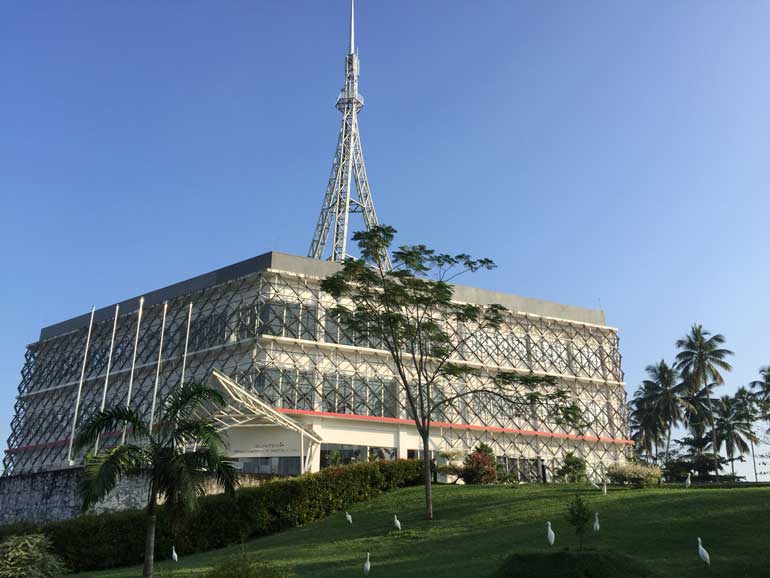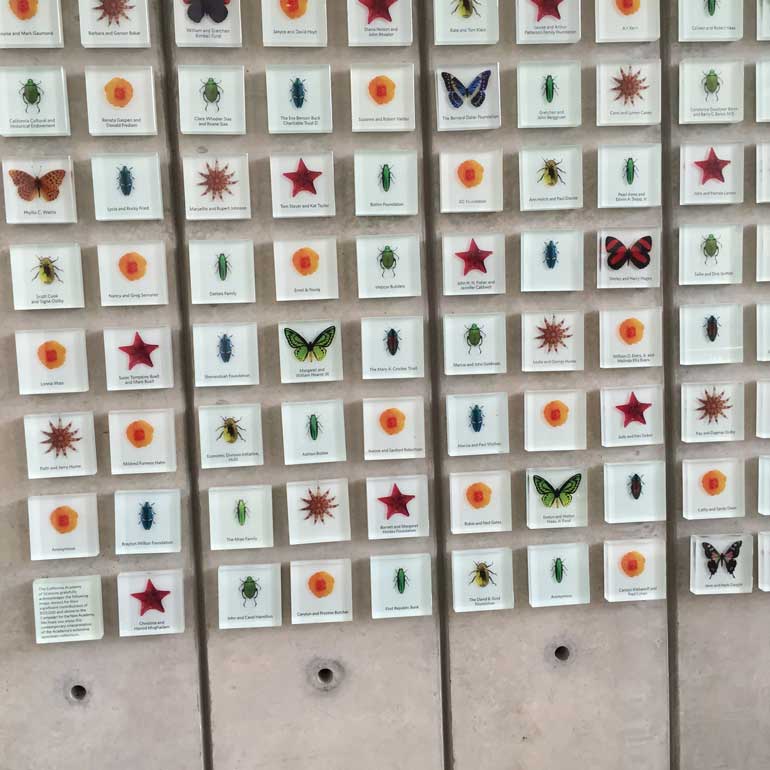Thursday Dec 12, 2024
Thursday Dec 12, 2024
Thursday, 14 January 2016 00:00 - - {{hitsCtrl.values.hits}}
 SLINTEC
SLINTEC 
Californian Science Centre 
Californian Science Centre  SLINTEC’s brick for science program wall
SLINTEC’s brick for science program wall
Not a minute perhaps pass in our Isle of Serendib without hearing about a demand. Voices of all strengths appear to unite in one activity – clamouring for one benefit or another. Similarly there appears to be another band of people who wants to appease at any cost for such demands. Both power and poverty sing in unison.
Starting from homes and ending at the highest office, or from a tiny kitchen to a board room of blue chips, this tug-o-war with demands, concessions and appeasement appear to be the order of the day. After espousing a set of principles, hopefully with the right intentions, a bout of directed opposition takes all good intentions in a different direction.
Then there would be the announcement of meeting a majority of the demands and then the assurance the rest too are only a meeting away. We all listen to a message which says that everything is all right and that the system is really strong as a result of the discussion and compromise. Such a statement made when all incomes have turned into expenditures only baffles the simple minded.
Our society appears to be interested only in today and perhaps tomorrow. How can one change them to think about the future? How can one influence the society to behave in a way that is better for the individual and for all in general?
Better decisions
Waking up to a new law and a directive appears to be an anathema for most of us. Can a more gentle inducement work where the change is driven through the individual by getting the need to change be generated from within? How do you gently ‘nudge’ citizens towards better decisions?
Planner or a decision maker taking a decision is insufficient where the democracy is at work and widely differing intelligence levels are all brought down to one level of measurement. This gentle jostling is managed through the widespread adoption of behavioral sciences to aid and inform policy making.
Coupled with this scenario planning this may be a vital necessity within our corridors of power. Consider providing extra buses during festival times. However it may be of interest to note that lightening strikes too may take place during such periods which is a behavioural aspect. We may still not be aware whether farmers are happy to have a subsidy or a guarantee price or both. We may end up doing both at significant expense and with little gain. There would not be any communication that what we are doing is unacceptable and should not be practiced.
Our communication may be a one of triumph extolling virtues on the unwavering leadership on looking after the needy. The end result is a system destined to decline and a one reduced to count foreign reserves in terms of the capability to sustain how many months of purchases. The impossibility of such negative practices needs to be communicated and a receptive and a change-ready mindset created. It is not only those in poverty that needs to embrace such change. Those who have money still appear to like the permit! The permit and license mentality is quite pervasive.
Behavioural economics
This is behavioural science where the fundamentals come from behavioural economics. This stream of economics is different from the standard economics. While standard economics believes in rational choices the norm in behavioural economics is that irrationality or the irrational decision making to be the more dominant. This begs such irrational behaviors to be factored into the decision making process and the modern day tendency to actually implement with accommodating such concepts.
There is the challenge of nudging too much or understanding the right way of doing that. Some may actually not like such an approach as it may be construed as government engaged in mind bending exercises in getting their way with people.
In the light of this we hear of a program which is different and one which emulates what other societies have known for many years and with guaranteed results. I remember one day in Cambridge waking up to hear that a college (Wolfson College) had received a massive sum of money from the last will of a Norwegian businessman.
Such situations are not rare in those parts of the world. There are many who donate without any identification – unknown benefactors. Giving without naming an act which is quite enriching is a concept that is yet to emerge and that certainly is another level of behavior at this stage for us. In a society perhaps where ‘Dana’ is a well known term and an acknowledged meritorious act, we still like to see our name on print and the recitation of the name over a microphone even with a simple task of giving a donation to pay the electricity bill of a temple.
We even witness situations where one exhorts money and then donate in one’s name – interesting isn’t it? Much harder is enticing someone to donate for the cause of science. Giving to science is a distant dream and what can turn tables for our economy is basically kept dry.
SLINTEC ‘brick for science’
The Sri Lanka Institute of Nanotechnology (SLINTEC) has initiated a program of endowments and donations. The program is now present and had been in operation for some time and one is not seeing a situation of opened floodgates! While endowments are significant and important, individuals may not be able to by themselves to carry out an endowment which may be left to corporates. Now individuals do have a choice of ‘brick for science’.
In the SLINTEC scheme a brick amounts to a million rupees. This is enabling a vision of innovating for Sri Lanka brick by brick – a million by million. The strength of a character may be that if someone throws bricks at you, the ability to build walls or lay the foundation from the bricks thrown at you. Here the ability is to harness the kind generosity of an individual and the aggregate of positive acts enabling laying a foundation for a stronger tomorrow. It is important to realise that the Government cannot totally foot the bill of an advanced technology initiative especially when the pot of money is only barely sufficient to pay the interest on loans, salaries and foot the subsidies!
Starting from a 50:50 basis, with equal investments from the State and the private sector today SLINTEC has benefitted from significant Government investments which may be around Rs. 2 billion worth. Yet when one considers a state-of-the-art research environment this is still insufficient and additional funds are necessary. This is where the brick-for-science is a useful crowd sourcing philanthropy. It is important for the individuals to know and feel the cause for which the bricks are exchanged. For SLINTEC, former banker Nihal Fonseka had led the way in this regard.
Innovative crowd sourcing mechanisms
One may say that in pursuit of science and knowledge led growth, one may not be able to identify the limit for an investment.
Take the case of California, a state of the United States, ultra-rich in its own right. One can walk into an informal education centre such as a Science Centre in California and you can see innovative crowd sourcing mechanisms – as I indicated earlier rich Western society’s philanthropic activities in these directions are not rare. In the picture you see how they entice well-wishers to part with their money for a good cause.
Managing these informal education spaces is not easy and certainly not cheap. Modern science centres are both technically and visually rich. They do also support variety with exhibits where the dynamism commands investments. As such systems cannot be maintained only through ticket sales generosity of the masses are required. The generosity is driven through the understanding of importance of such informal education systems. It is that giving for a meaningful existence that we need to inculcate within ourselves and systems.
[The writer is Professor of Chemical and Process Engineering at the University of Moratuwa, Sri Lanka. With an initial BSc Chemical engineering Honours degree from Moratuwa, he proceeded to the University of Cambridge for his PhD. He is the Project Director of COSTI (Coordinating Secretariat for Science, Technology and Innovation), which is a newly established State entity with the mandate of coordinating and monitoring scientific affairs. He can be reached via email on [email protected].]